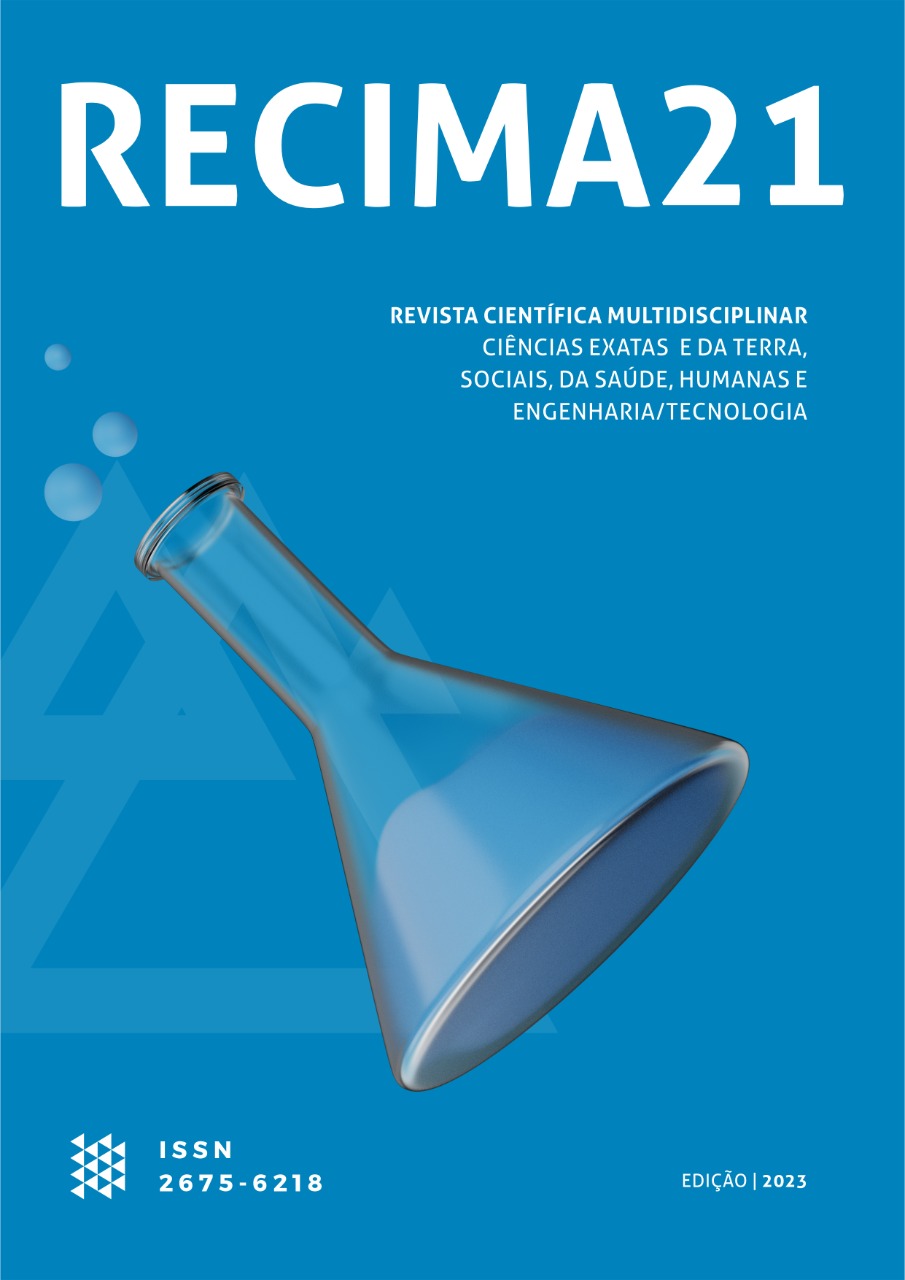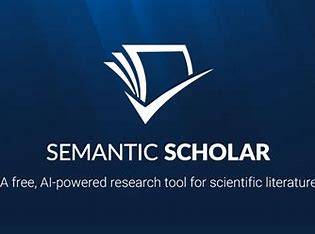EVALUACIÓN DE LA INCIDENCIA DE TRASTORNOS ALIMENTARIOS EN ESTUDIANTES DE MEDICINA EN EL OESTE DE PARANÁ DURANTE EL PERÍODO DE PANDEMIA DE COVID-19
DOI:
https://doi.org/10.47820/recima21.v4i4.2962Palabras clave:
investigación tuvo como objetivo analizar una indicación de trastornos alimentariosResumen
Esta investigación tuvo como objetivo analizar una indicación de trastornos alimentarios durante el período de pandemia en estudiantes de medicina en un Centro Universitario privado en el interior de Paraná. Estudio transversal, exploratorio, descriptivo, centrado en la recolección de datos mediante la aplicación de un cuestionario semiestructurado adaptado de la EAT-26. Un total de 103 estudiantes respondieron a la encuesta, 66% mujeres y 34% hombres. En cuanto al peso durante la pandemia, el 10,7% de la población mantuvo peso, el 26,2% tuvo pérdida de peso y el 63,1% de la población estudiada aumentó de peso. La incidencia de sobrepeso fue del 22%. Hubo 7 participantes más que comenzaron a clasificarse como obesidad grado I y 4 comenzaron a ser obesos grado II. En relación a EAT-26, en la dieta, 10,3% son candidatos para trastornos alimentarios ya que, comenzaron a preocuparse (incidencia del 10,3%) con la ingesta de alimentos y la forma física después del confinamiento. La incidencia de participantes con signos de bulimia o preocupación alimentaria fue del 4,9%. La incidencia de la población que perdió el control oral después del confinamiento relacionado con covid-19 fue del 13,3%. Por lo tanto, el presente estudio encontró que una parte de los estudiantes como candidatos para trastornos alimentarios, se deben desarrollar más estudios para identificar a esta población susceptible para que se empleen acciones preventivas para evitar la aparición real de esta condición.
Descargas
Citas
Xiong J, Lipsitz O, Nasri F, Lui LMW, Gill H, Phan L, Chen-Li D, Iacobucci M, Ho R, Majeed A, McIntyre RS. Impact of COVID-19 pandemic on mental health in the general population: A systematic review. J Affect Disord. 2020 Dec 1;277:55-64. doi: 10.1016/j.jad.2020.08.001.
Gibson-Smith D, Bot M, Brouwer IA, Visser M, Giltay EJ, Penninx BWJH. Association of food groups with depression and anxiety disorders. Eur J Nutr. 2020 Mar;59(2):767-778. doi: 10.1007/s00394-019-01943-4.
Fang L, Karakiulakis G, Roth M. Are patients with hypertension and diabetes mellitus at increased risk for COVID-19 infection? Lancet Respir Med. 2020 Apr;8(4):e21. doi: 10.1016/S2213-2600(20)30116-8..
World Health Organization Food and Nutrition Tips During Self-Quarentine. (acessado em 10 de Março de 2022); https://www.euro.who.int/en/health-topics/health-emergencies/coronavirus-COVID-19/publications-and-technical-guidance/food-and-nutrition-tips-during-self-quarantine
Torres SJ, Nowson CA. Relationship between stress, eating behavior, and obesity. Nutrition. 2007 Nov-Dec;23(11-12):887-94. doi: 10.1016/j.nut.2007.08.008.
Dourado IL, Caetano LAV, Marques UPAP, et al. Study of the natural history of COVID-19 and epidemiology of sars-cov-2 infection: a descriptive literature review. Braz J Surg Clin Res. 2021;33(3):46-56.
Nazare KA, Rodrigues BTF, Martins JL, et al. Relationship between infection through sars-cov2 and sharp inflammation as an aggravating factor in covid-19. Braz J Surg Clin Res. 2021;36(1):46-52.
Baraniuk C. Fears grow of nutritional crisis in lockdown UK. BMJ. 2020;370:m3193–m3196. doi: 10.1136/bmj.m3193.
Headey D, Heidkamp R, Osendarp S, et al. Impacts of COVID-19 on childhood malnutrition and nutrition-related mortality. Lancet. 2020;396(10250):519–521. doi: 10.1016/S0140-6736(20)31647-0
Souza RP, Sousa RWR, Santos AB, et al. Prevalence of overweight / obesity and evaluation of the bioimpedance of trucks users or not of amphetamines. Braz J Surg Clin Res. 2019;26(3):19-24.
Flaudias V, Iceta S, Zerhouni O, et al. COVID-19 pandemic lockdown and problematic eating behaviors in a student population. J Behav Addict. 2020;9(3):826–35. 10.1556/2006.2020.00053.
Poelman MP, Gillebaart M, Schlinkert C, et al. Eating behavior and food purchases during the COVID-19 lockdown: a cross-sectional study among adults in the Netherlands. Appetite. 2021;157:105002.
Antwi J, Appiah B, Oluwakuse B, Abu BAZ. The Nutrition-COVID-19 Interplay: a Review. Curr Nutr Rep. 2021;10(4):364-374. doi: 10.1007/s13668-021-00380-2.
Di Renzo L, Gualtieri P, Cinelli G, et al. Psychological aspects and eating habits during COVID-19 home confinement: results of EHLC-COVID-19 Italian online survey. Nutrients. 2020;12(7):2152. doi: 10.3390/nu12072152;89-90.
Azzeh M, Peachey G, Loney T. Prevalence of High-Risk Disordered Eating Amongst Adolescents and Young Adults in the Middle East: A Scoping Review. Int J Environ Res Public Health. 2022 26;19(9):5234. doi: 10.3390/ijerph19095234.
Mazucato, T. Metodologia da pesquisa e do trabalho científico. Penápolis: FUNEPE, 2018. Disponível em: http://funepe.edu.br/arquivos/publicacoes/metodologia-pesquisa-trabalho-cientifico.pdf
Fortes, L et al. Qualidades Psicométricas do Eating Attitudes Test (EAT-26) para Adolescentes Brasileiros do Sexo Masculino. Psicologia: Teoria e Pesquisa. 2016;32(3):e323220. https://doi.org/10.1590/0102-3772e323220.
Alfawaz H, Amer OE, Aljumah AA, Aldisi DA, Enani MA, Aljohani NJ, Alotaibi NH, Alshingetti N, Alomar SY, Khattak MNK, Sabico S, Al-Daghri NM. Effects of home quarantine during COVID-19 lockdown on physical activity and dietary habits of adults in Saudi Arabia. Sci Rep. 202115;11(1):5904. doi: 10.1038/s41598-021-85330-2.
Ferreira MC, Leite NGM. Adaptação e validação de um instrumento de avaliação da satisfação com a imagem corporal. Aval. psicol. 2002;1( 2 ): 141-149.
Papini NM, Jung M, Cook A, Lopez NV, Ptomey LT, Herrmann SD, Kang M. Psychometric properties of the 26-item eating attitudes test (EAT-26): an application of rasch analysis. J Eat Disord. 2022;10(1):62. doi: 10.1186/s40337-022-00580-3.
Bighetti, FS, Santos CB, Santos JE, Ribeiro RPP. Translation and validation of the Eating Attitudes Test in female adolescents in Ribeirão Preto, SP, Brazil. J. bras. Psiquiatr. 2004;53(6): 339-346.
Shen W, Long LM, Shih CH, Ludy MJ. A humanities-based explanation for the effects of emotional eating and perceived stress on food choice motives during the COVID-19 pandemic. Nutrients. 2020;12(9):2712–23. 10.3390/nu12092712.
Bhutani S, vanDellen MR, Cooper JA. Longitudinal weight gain and related risk behaviors during the COVID-19 pandemic in adults in the US. Nutrients. 2021;13(2):671. 10.3390/nu13020671.
Ammar A, Brach M, Trabelsi K, et al. Effects of COVID-19 home confinement on eating behaviour and physical activity: results of the ECLB-COVID19 international online survey. Nutrients. 2020;12(6):1583–96. 10.3390/nu12061583.
Niles MT, Bertmann F, Belarmino EH, Wentworth T, Biehl E, Neff R. The early food insecurity impacts of COVID-19. Nutrients. 2020;12(7):2096–108. 10.3390/nu12072096.
Kołota A, Głąbska D. COVID-19 pandemic and remote education contributes to improved nutritional behaviors and increased screen time in a Polish population-based sample of primary school adolescents: Diet and Activity of Youth during COVID-19 (DAY-19) study. Nutrients. 2021;13(5):1596. doi: 10.3390/nu13051596.
Morais AHA, Aquino JS, da Silva-Maia JK, Vale SHL, Maciel BLL, Passos TS. Nutritional status, diet and viral respiratory infections: perspectives for severe acute respiratory syndrome coronavirus 2. Br J Nutr. 2021;125(8):851–62. 10.1017/S0007114520003311.
Di Renzo L, Gualtieri P, Cinelli G, et al. Psychological aspects and eating habits during COVID-19 home confinement: results of EHLC-COVID-19 Italian online survey. Nutrients. 2020;12(7):2152. doi: 10.3390/nu12072152;89-90
Rodgers RF, Lombardo C, Cerolini S, Franko DL, Omori M, Fuller-Tyszkiewicz M, Linardon J, Courtet P, Guillaume S. The impact of the COVID-19 pandemic on eating disorder risk and symptoms. Int J Eat Disord. 2020;53(7):1166-1170. doi: 10.1002/eat.23318.
Fernández-Aranda F, Munguía L, Mestre-Bach G, et al. COVID Isolation Eating Scale (CIES): analysis of the impact of confinement in eating disorders and obesity—a collaborative international study. Eur Eat Disord Rev. 2020;28(6):871–83. 10.1002/erv.2784.
Navaro, D. A. , Raz, O. , Gabriel, S. , Shriqui, V. K. , Gonen, E. , & Boaz, M. (2017). Functional foods in fad diets: A review. Functional Foods in Health and Disease, 7(9), 702–715. 10.31989/ffhd.v7i9.346
Brooks, S. K. , Webster, R. K. , Smith, L. E. , Woodland, L. , Wessely, S. , Greenberg, N. , & Rubin, G. J. (2020). The psychological impact of quarantine and how to reduce it: Rapid review of the evidence. The Lancet, 395, 912–920. 10.1016/S0140-6736(20)30460-8
Descargas
Publicado
Cómo citar
Número
Sección
Categorías
Licencia
Derechos de autor 2023 RECIMA21 - Revista Científica Multidisciplinar - ISSN 2675-6218

Esta obra está bajo una licencia internacional Creative Commons Atribución 4.0.
Os direitos autorais dos artigos/resenhas/TCCs publicados pertecem à revista RECIMA21, e seguem o padrão Creative Commons (CC BY 4.0), permitindo a cópia ou reprodução, desde que cite a fonte e respeite os direitos dos autores e contenham menção aos mesmos nos créditos. Toda e qualquer obra publicada na revista, seu conteúdo é de responsabilidade dos autores, cabendo a RECIMA21 apenas ser o veículo de divulgação, seguindo os padrões nacionais e internacionais de publicação.

 Clique para ver detalhes
Clique para ver detalhes 











